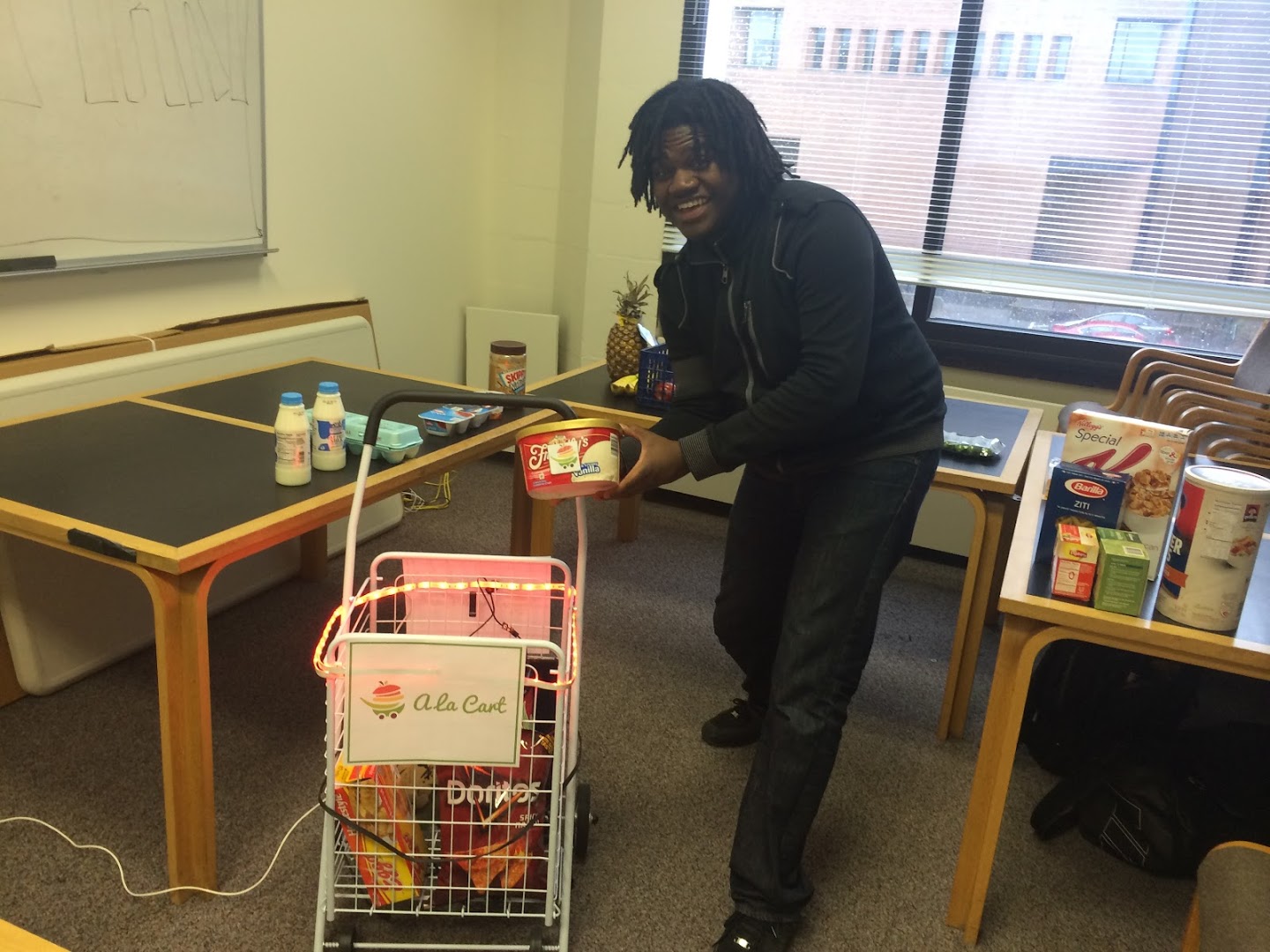Prototyping
Traditionally my formal education had mostly been in technology and engineering. Using iterative design methods, I have been able to translate the same electronics rigor to the complex process of creating a functional device and experience for users. Whether it is hardware or software, there is always a need to follow a process that supports the teams’ increasing awareness to the challenge at hand.
My team was tasked on working on an on-campus project at Rochester Institute of Technology that would “make life easier”. With our open challenge in mind, and only requirements are that we would need to create and test a working physical prototype in 4 months, our ideas seemed boundless.
How can you encourage healthy food shopping habits?
Before building anything, we had agreed to follow an iterative approach to our design task. My group had created sketches to problems we had seen on a daily basis related to traveling, shopping, health, education, etc. We had decided we wanted to work with food shopping as our project domain and then went to observe shoppers in supermarkets to identify procedural problems that we thought could be addressed.
Approach
Upon several design reviews, the project had evolved from an app to a hardware and software service. Our task had been to create a testable low-fidelity prototype which helped keep our project focus very clear on our deadlines. My team of 4 members had each taken on several loose responsibilities related to our tasks to assist in accountability and productivity through the course of the project. My unofficial roles were in developing the physical prototype, project management, and usability test planning and operating.
After identifying several related user scenarios we all agreed we wanted to explore, we all began with a research literature evaluation related to the topic of food shopping and health. The collective analysis we obtained helped us form a persona we would begin to refine through field observations at local markets and surveys. We had each created a multi-question qualitative survey regarding shopping habits, healthy food shopping, technologies presence, and happiness with their results. With that information in hand, we worked on reimagining the food shopping experience using technology to augment the goals of food shoppers. Our project title had become “A La Cart.”
For our low fidelity prototype, we had decided we would create a shopping cart and a prototype companion mobile application for simulated real time feedback. As a person would shop, their mobile app would be able to keep track of what items would be placed in a smart shopping cart paired over Bluetooth. The shopping cart would then be able to determine if items being placed inside fit your health and dietary goals with lights as you place something inside. Based on our literature reviews and studies by the USDA, we decided to use a traffic light color scheme to help people understand if something was very close to their goals (green light), not as beneficial (yellow light), or detrimental (red light). The cart would then proceed to show the average color of what your cart contains to act as a guide or reminder to make decisions closer to the goals set by a person before shopping.
Results
My team and I had conducted 2 user studies with our low fidelity prototype: the first study was an informative study in a lab with student test subjects and the second study took place with recruited students in our controlled shopping environment.
To make a believable shopping scenario we had decided to recruit students to shop in a controlled environment. Fortunately my teammates and I were able to get permission by the lead nutritionist and manager of the campus market to use their facilities for our testing. Because we wanted control over the results and were looking into the viability of our product my group and I had decided to label only particular foods for usage with the project. Limiting the food choices in the market would help us control some variables for user testing.
We had tested the full cart with the campus nutritionist present. She seemed very impressed with how the visual representation of our shopping actions could help someone realize some of the choices they were making. I had chosen to use the Phillips Hue light system that was controlled by an iPad for our studies. While my teammate was moderating the test with the participants I was adjusting the colors of the cart over the shoulder of my team member to simulate what an in cart scanner could show.
Impact
It was great for people to believe the experience had been really interesting. This project was an eye-opener in learning the nomenclature and issues within the nutrition industry. Because the field of health is ever changing as more research is developed, my team had learned that healthy food eating habits are very individual and personal to many people. Our shopping cart was not very discrete in showing what it contained and some people had expressed that they may feel embarrassed if their cart wasn’t entirely green if it contained foods they enjoyed vs. what their diet plan should consist of. Even when accounting for what food groups are supposed to be included in a daily diet as recommended by the USDA MyPlate initiative, this project showed that there could be many applications for others in the health industry in forming better shopping patterns for people.
The feedback we had received from many users of A La Cart was that this seemed like something they would like to use at some point in time. The prototype was able to tastefully fool most of our participants into thinking our fake tags were really scanning the food they put inside.






